YYYYMMDD >>> BACK HOME <<< >>> SELECTED FEATURES <<< >>> INTERVIEWS <<<
[20231109]
INFLAMMATION by PAKUI HARDWARE at LITHUANIAN NATIONAL MUSEUM OF ART (APPLIED ARTS AND DESIGN DEPARTMENT) [from 20231027 to 20230211]
[Photos: Pakui Hardware]
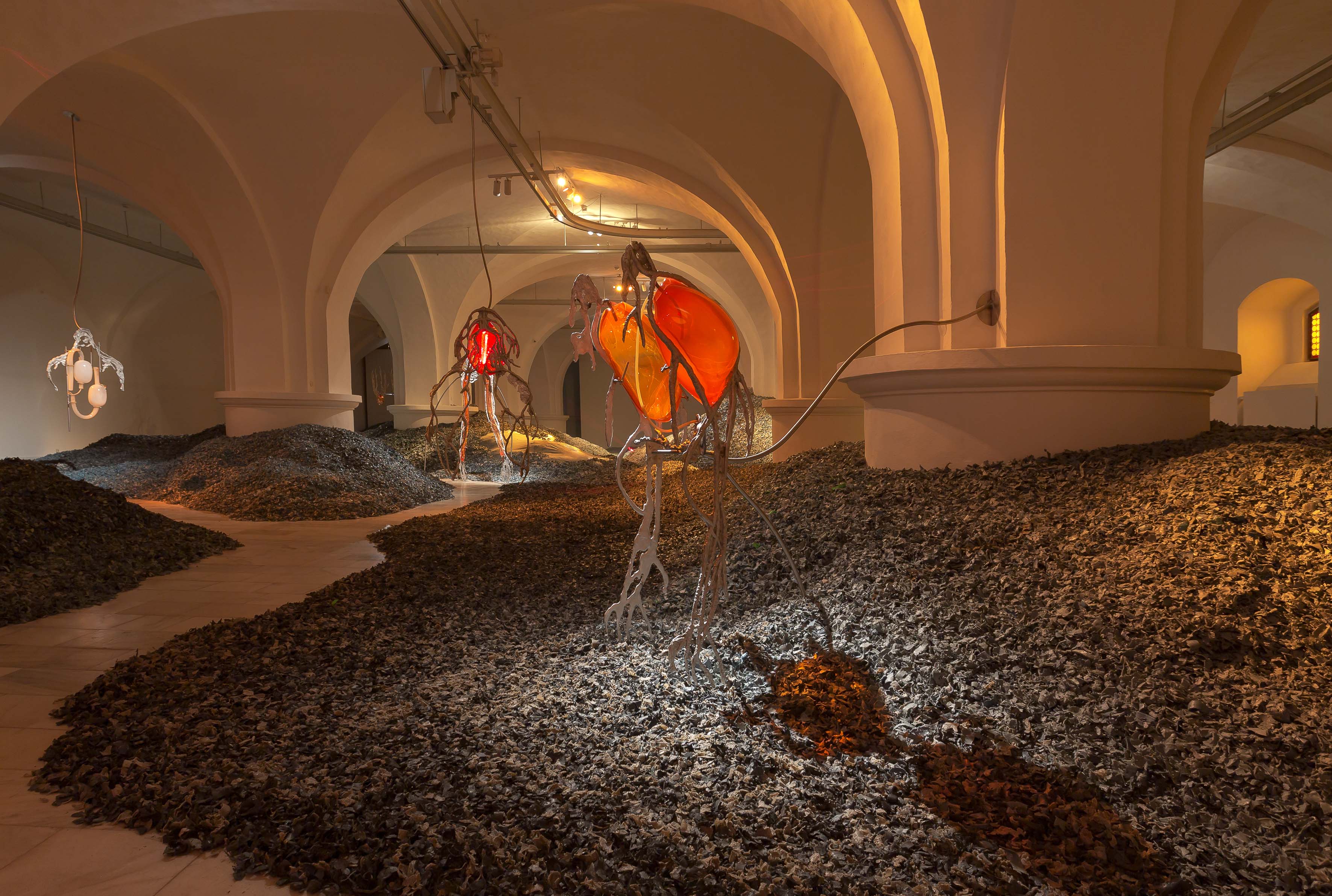

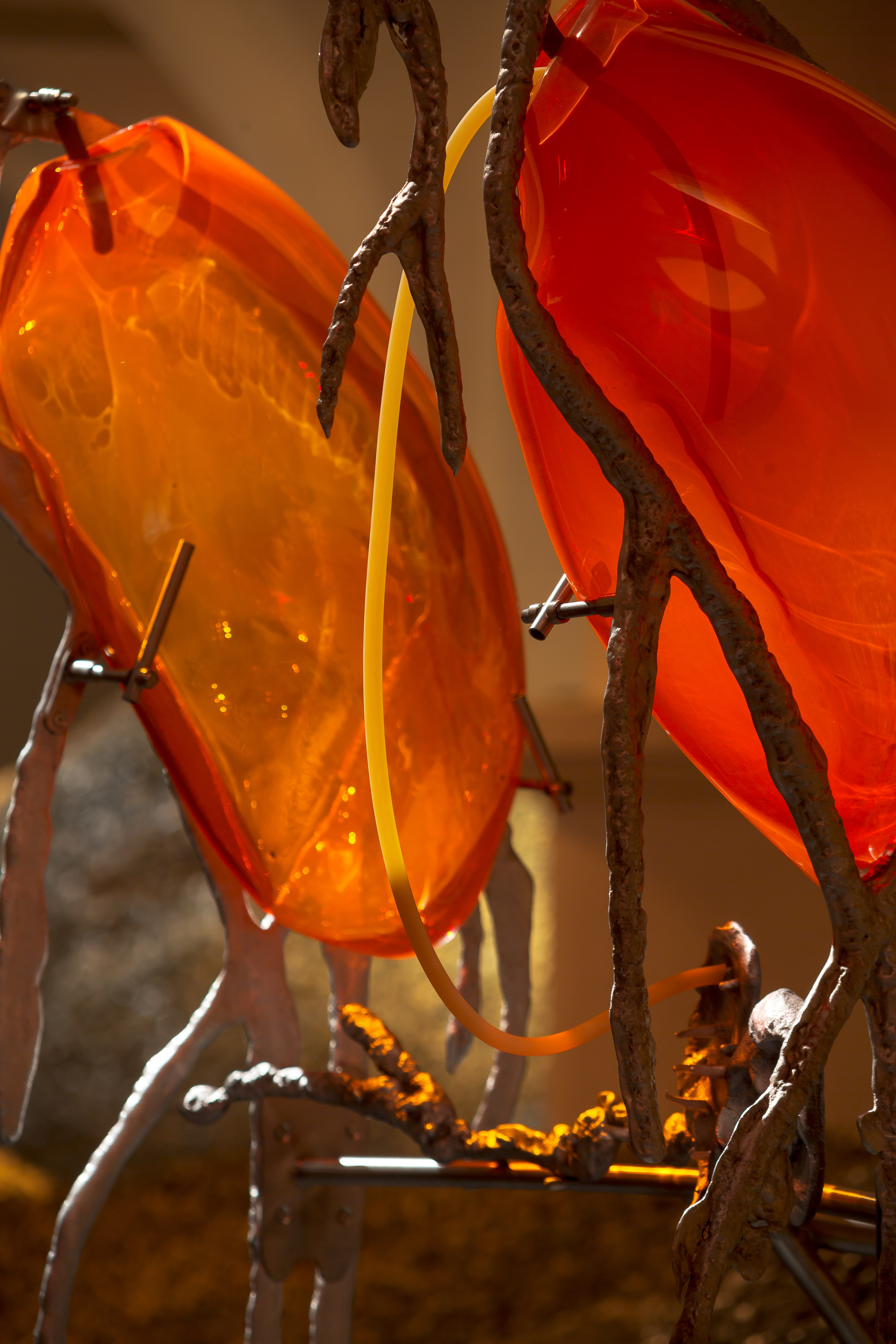
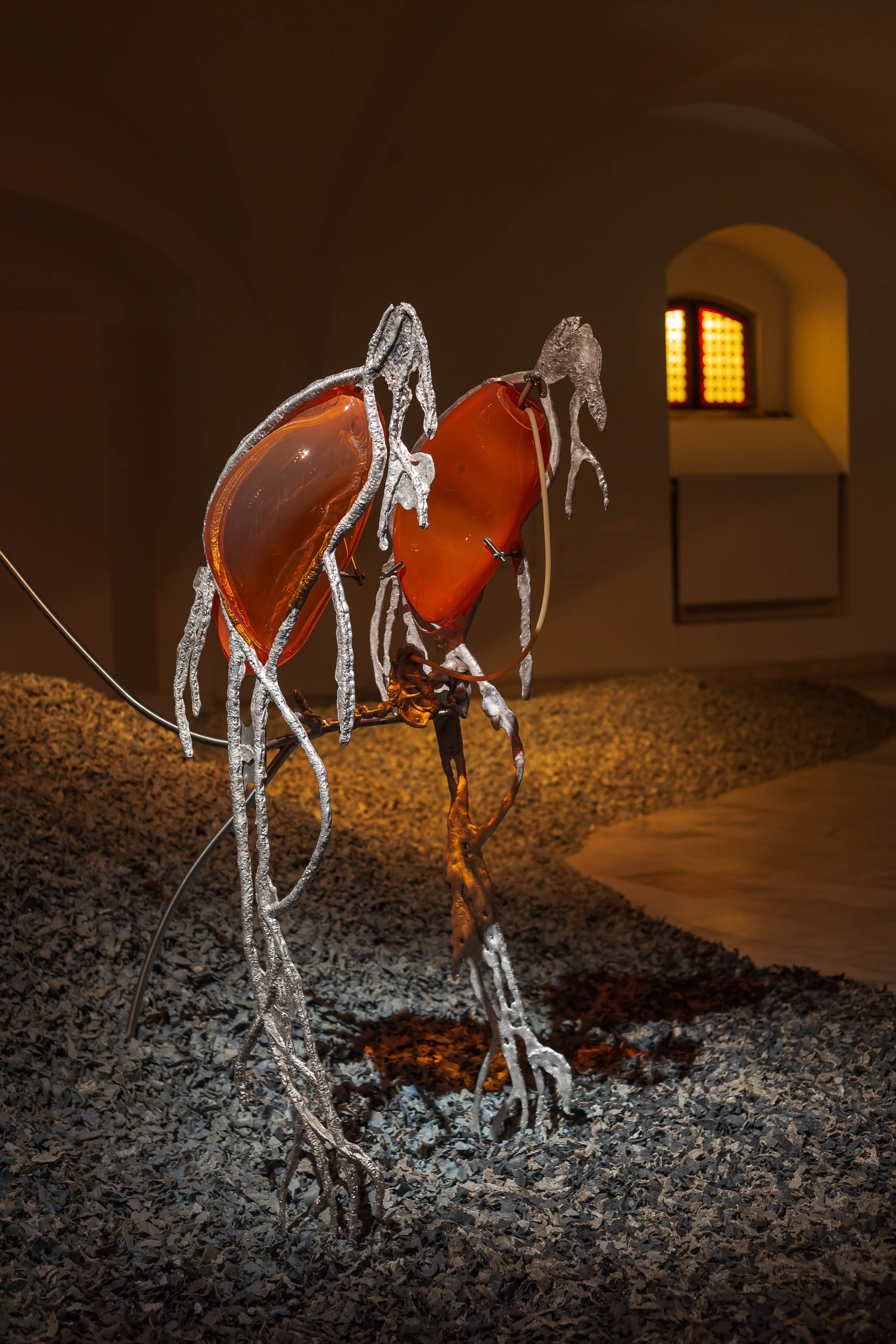
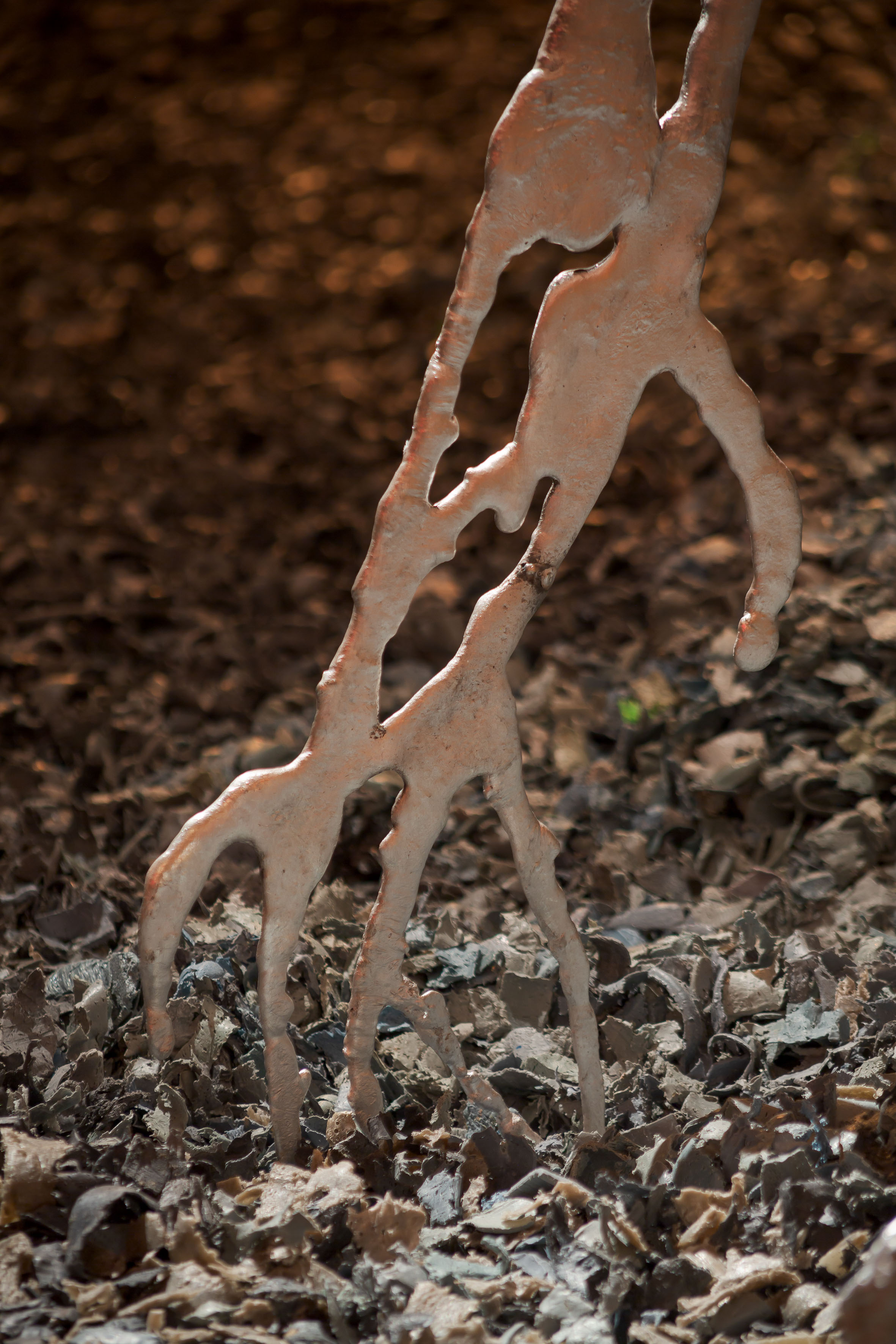

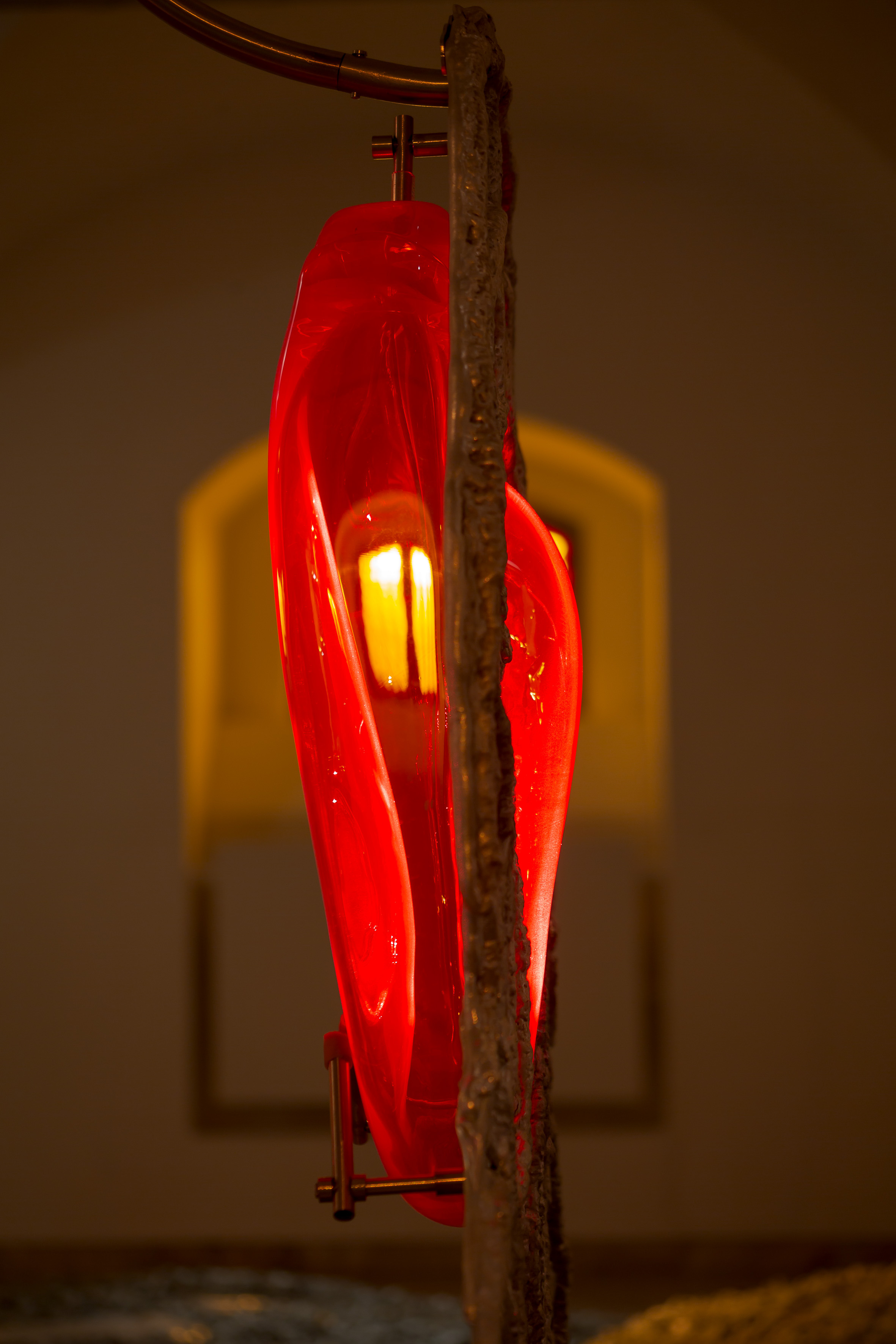


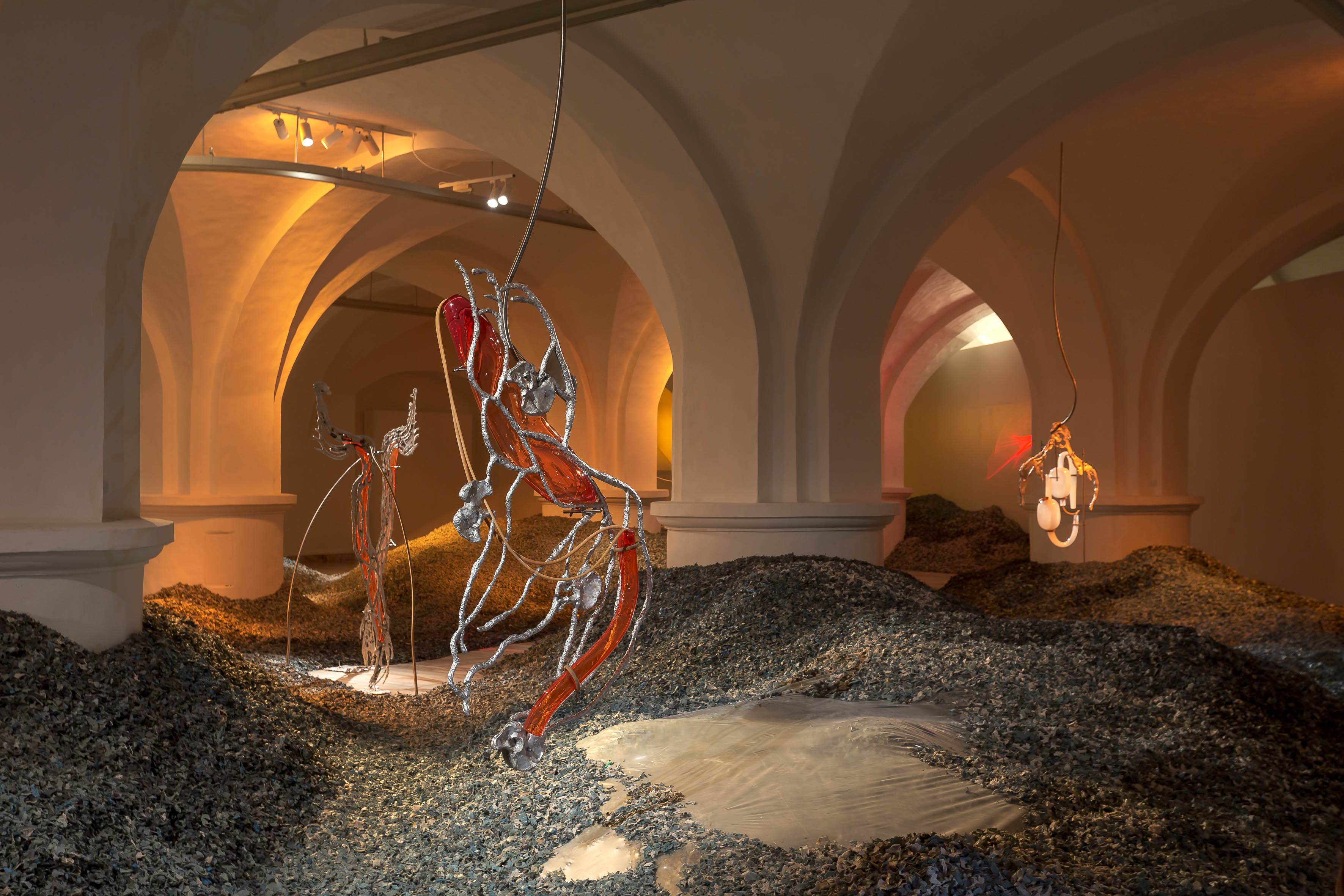

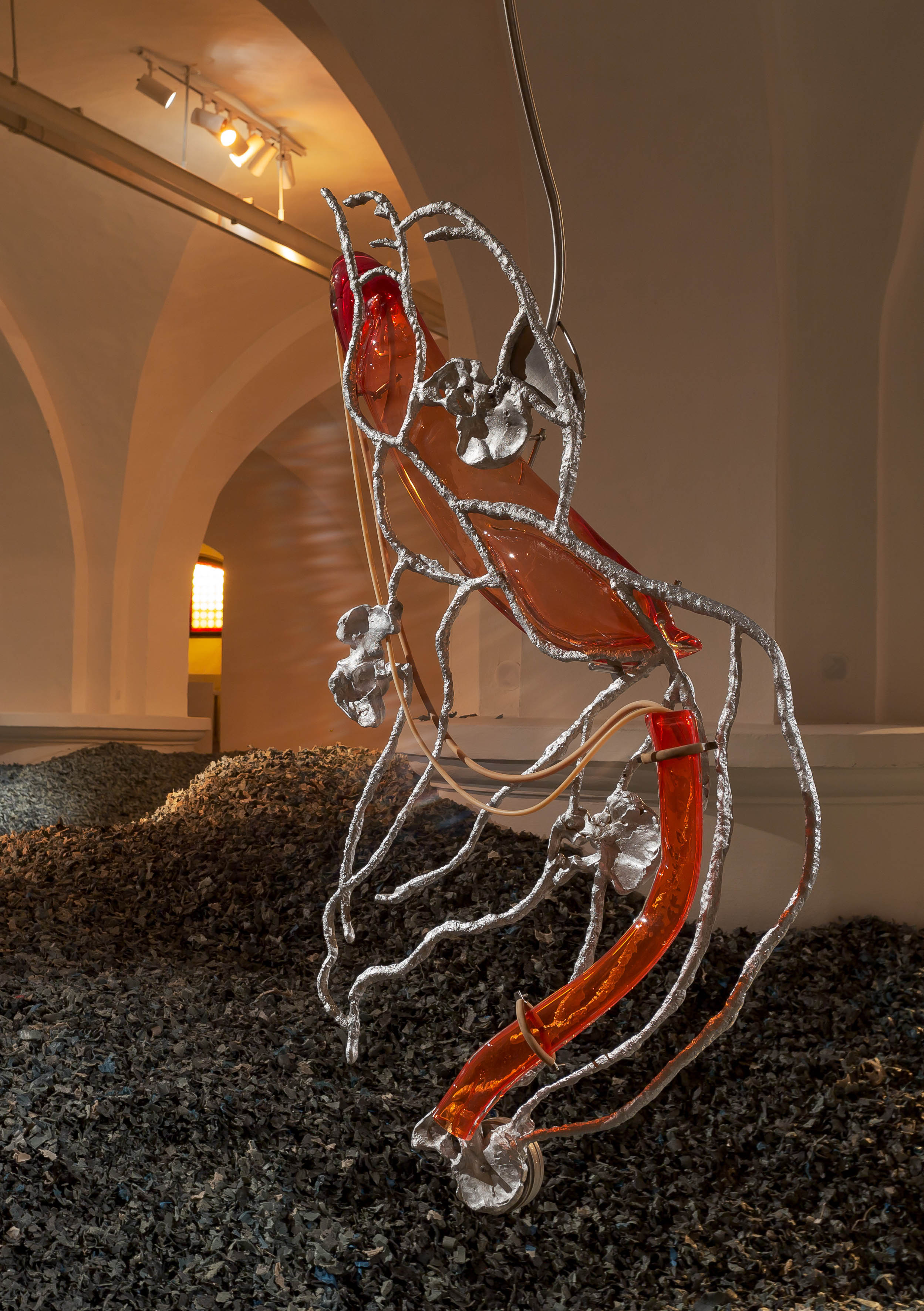

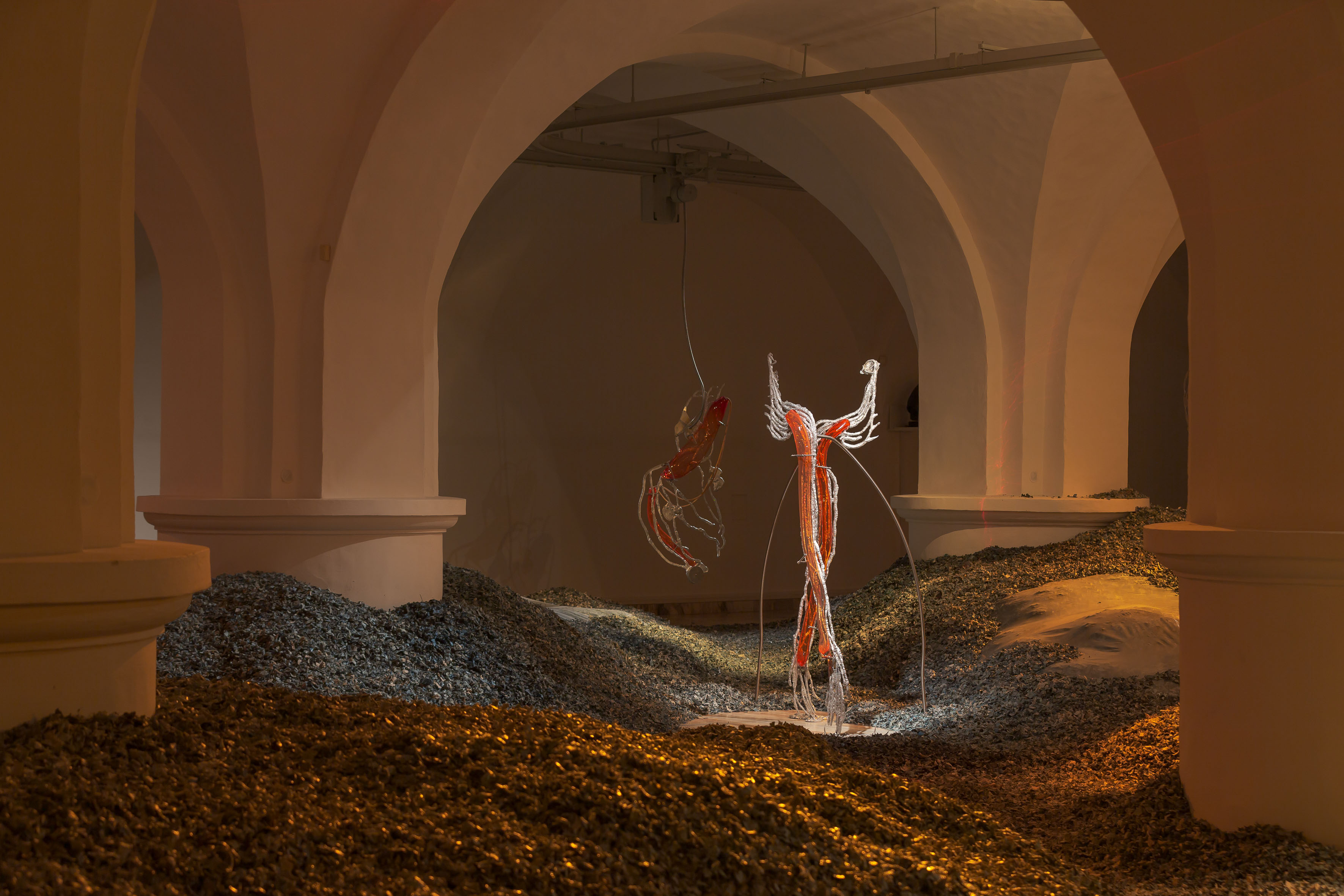

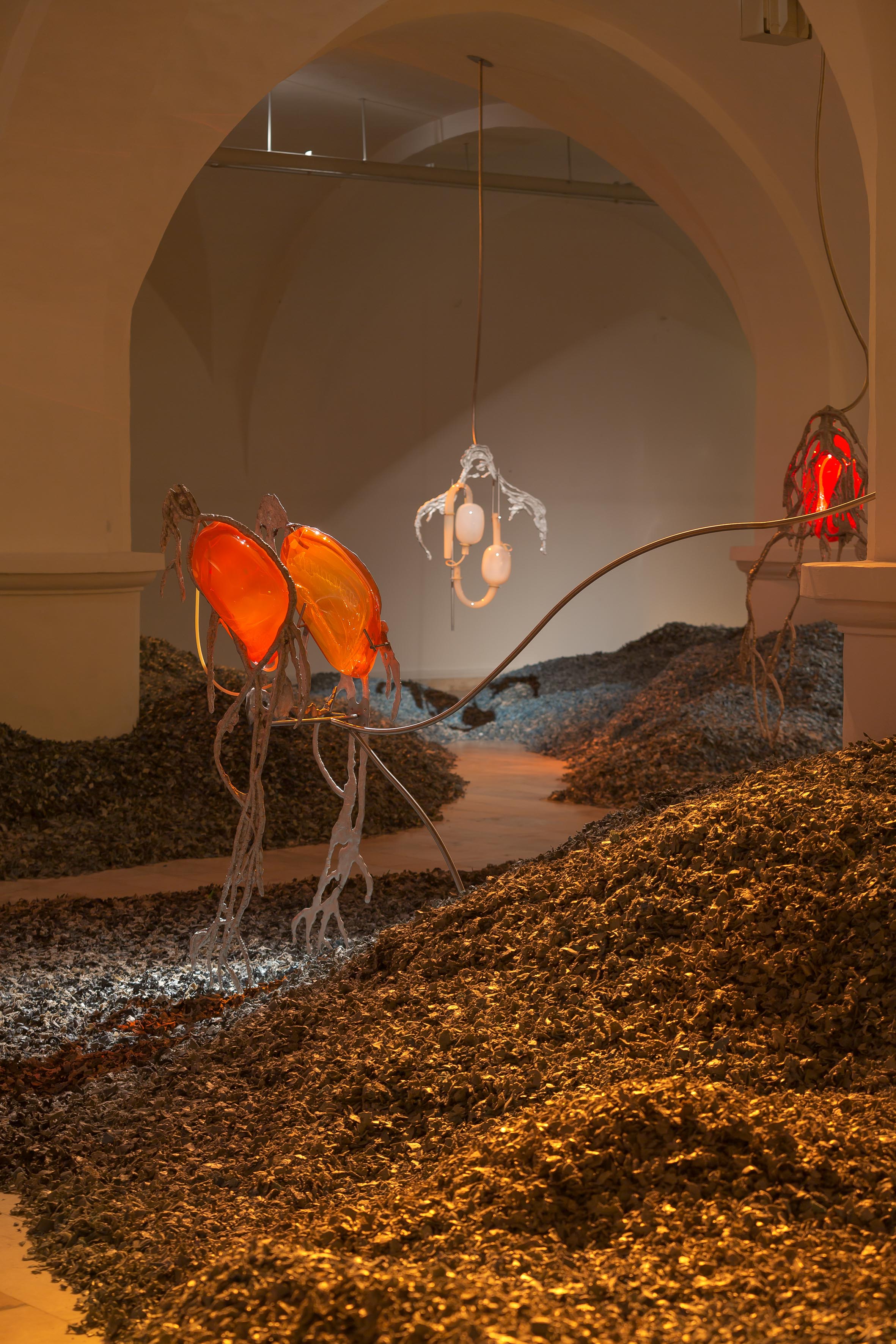
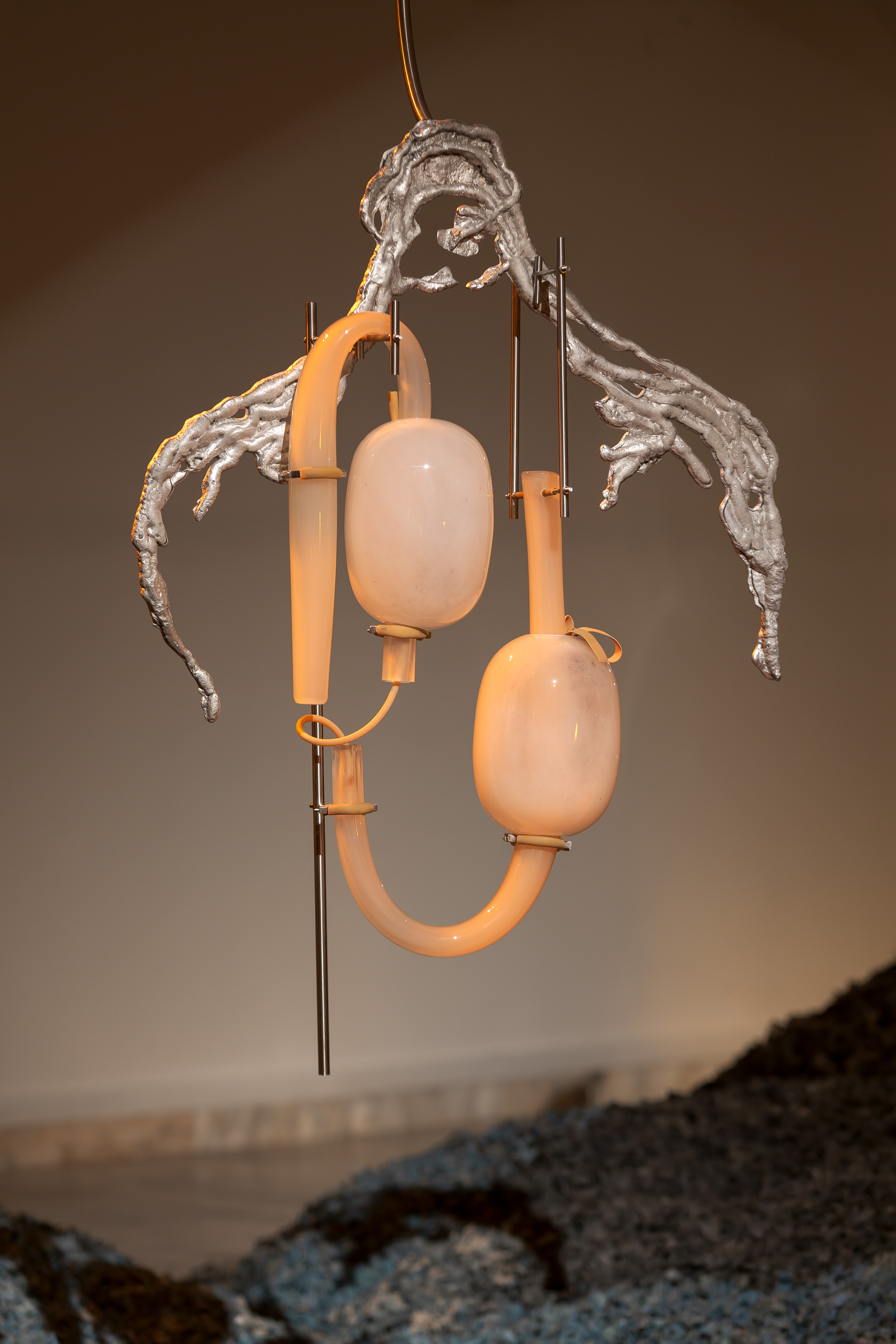

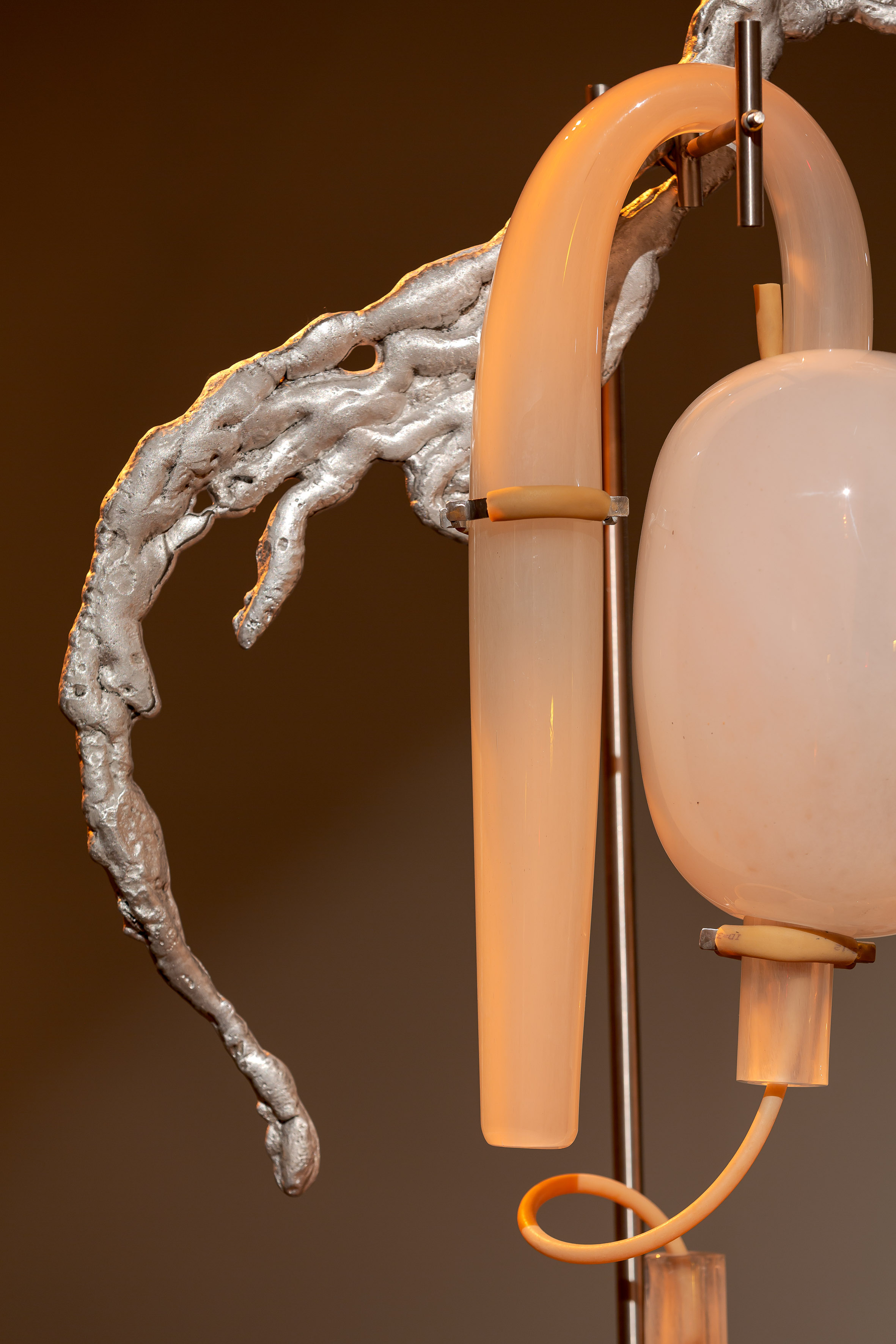
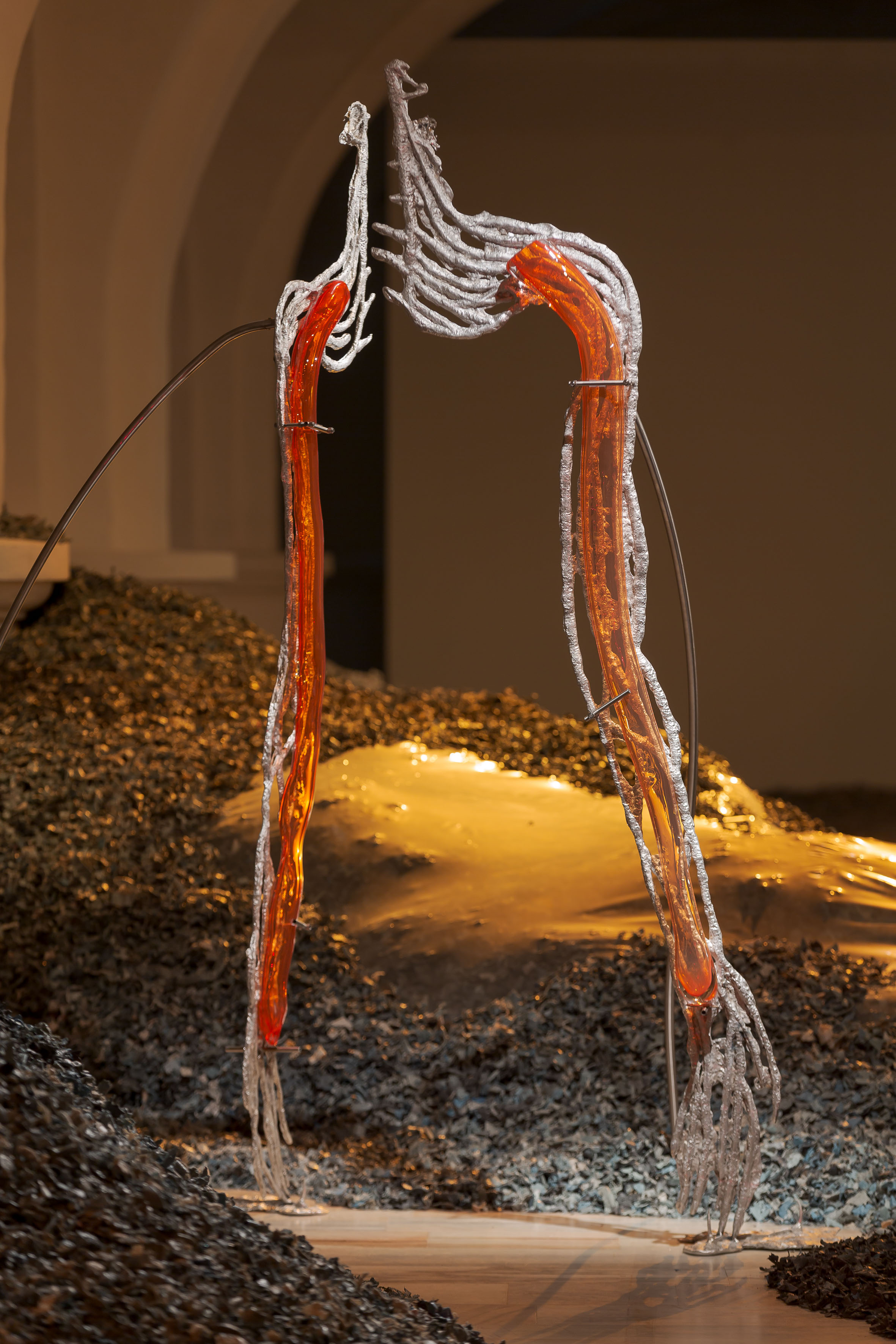





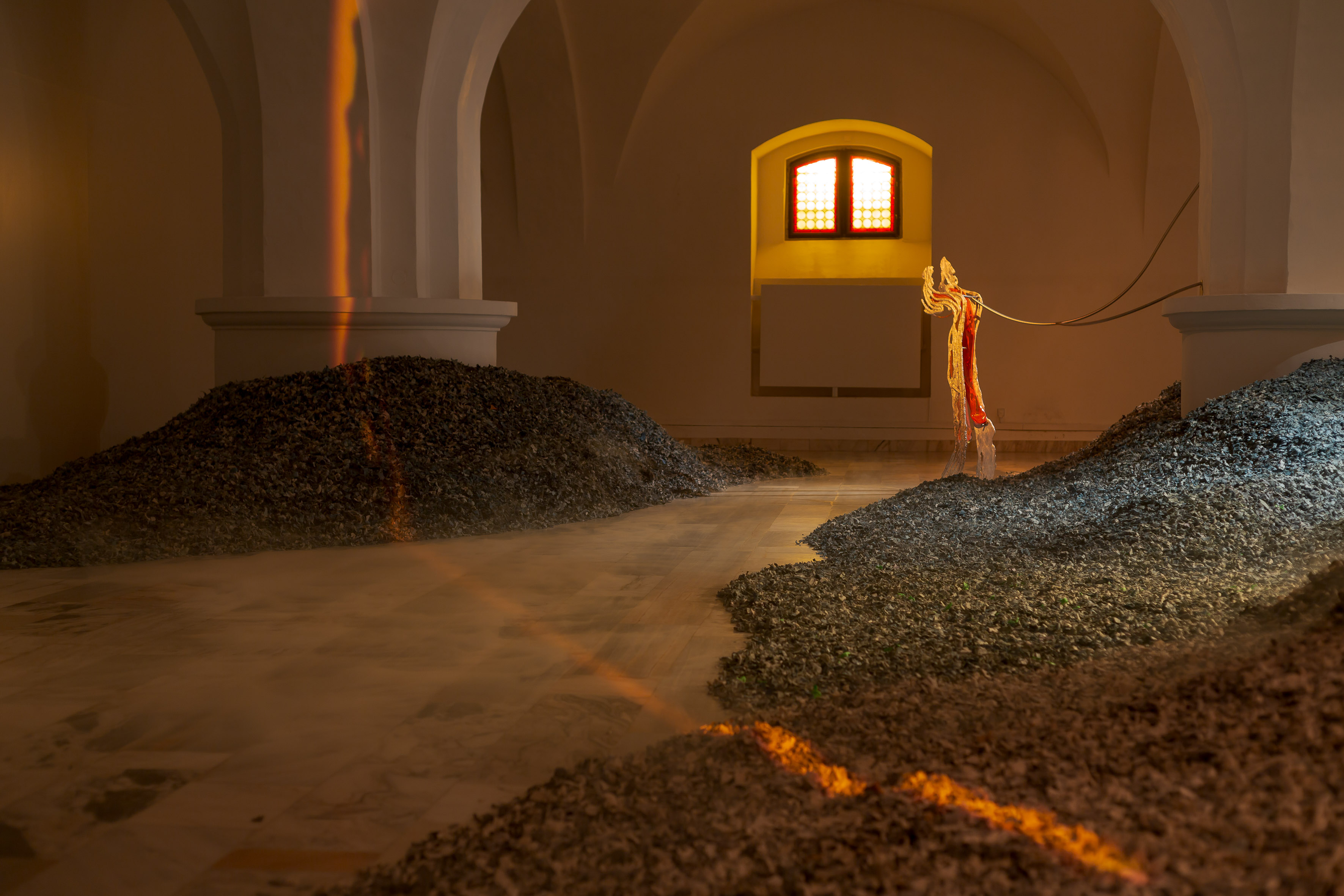
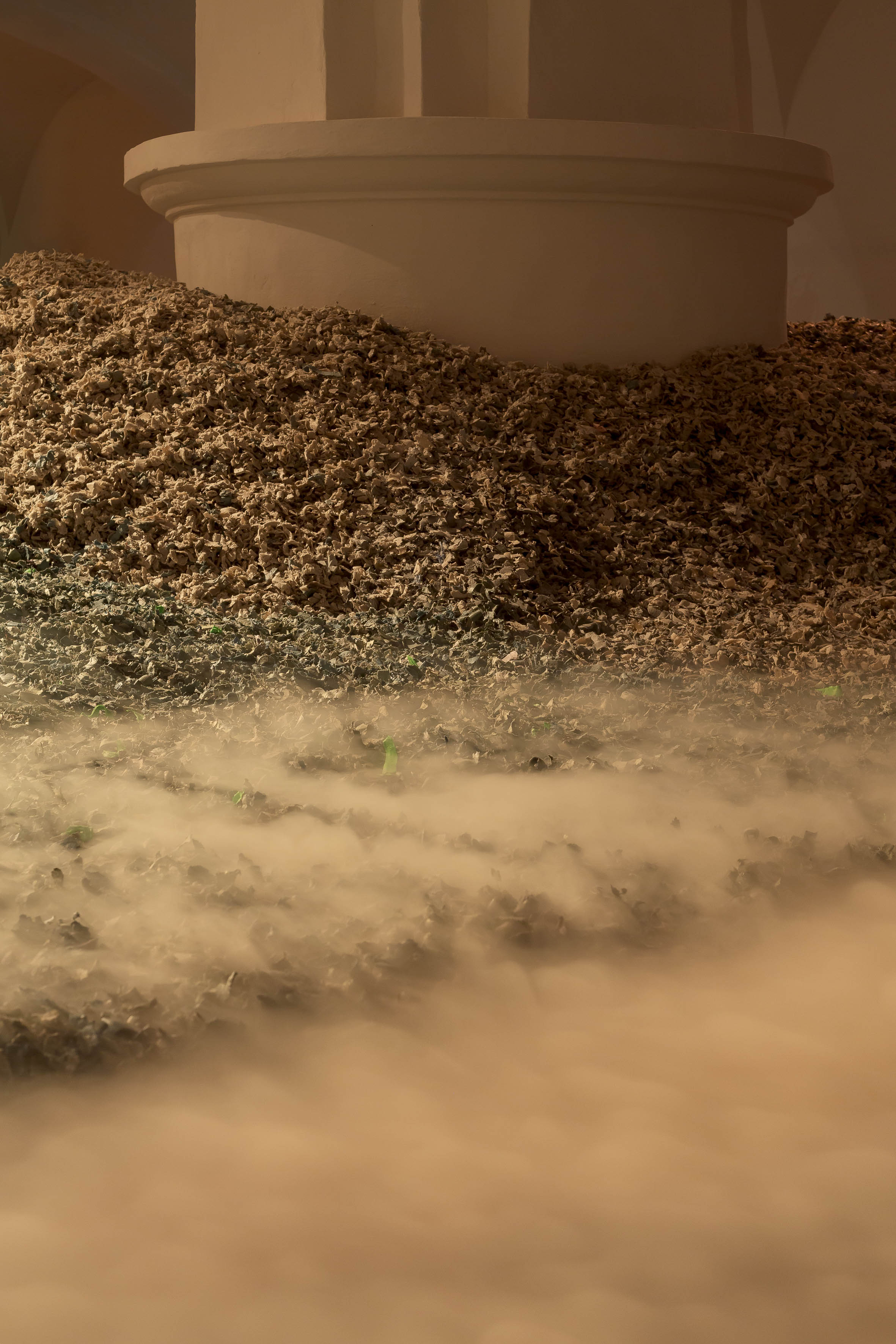
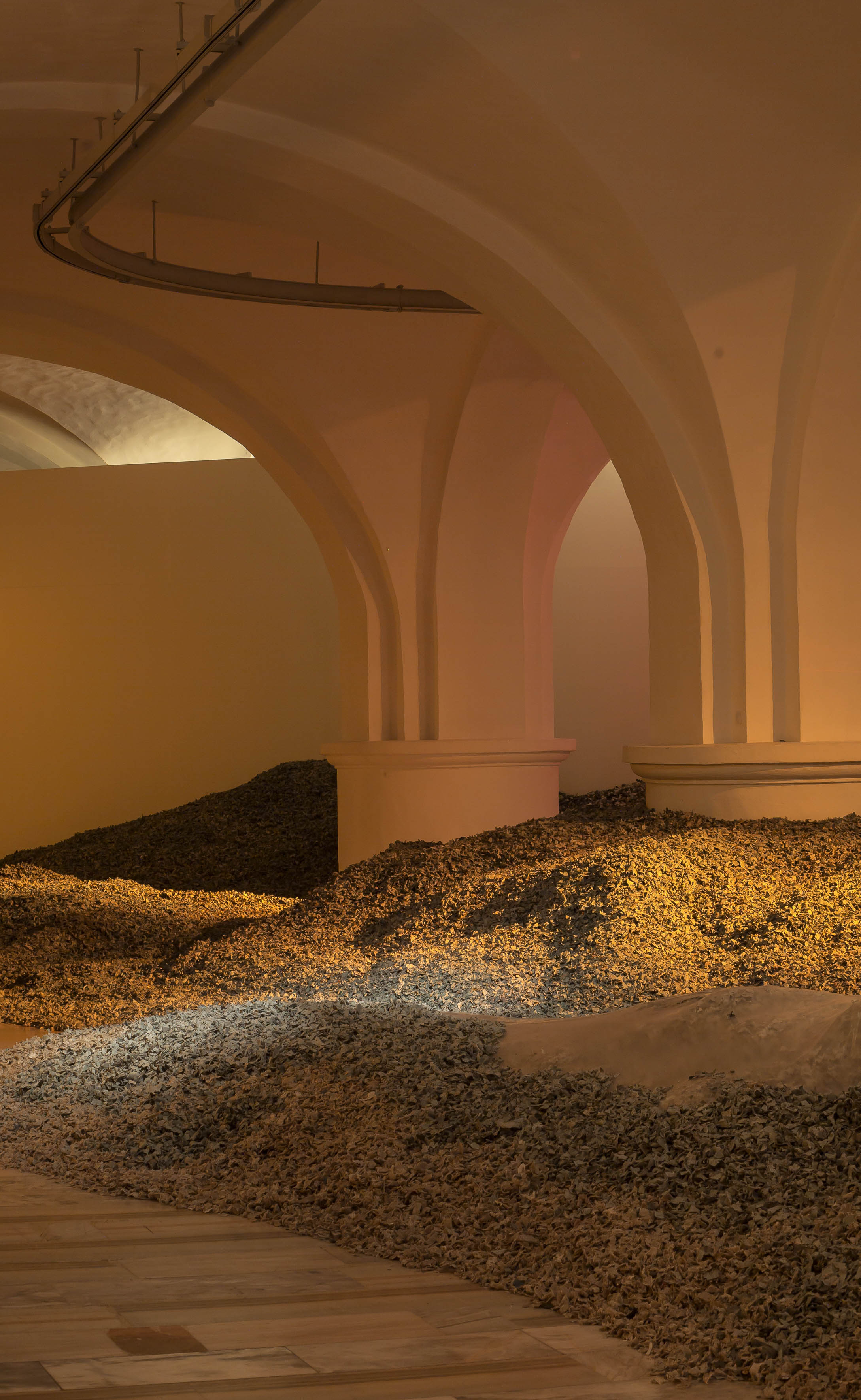

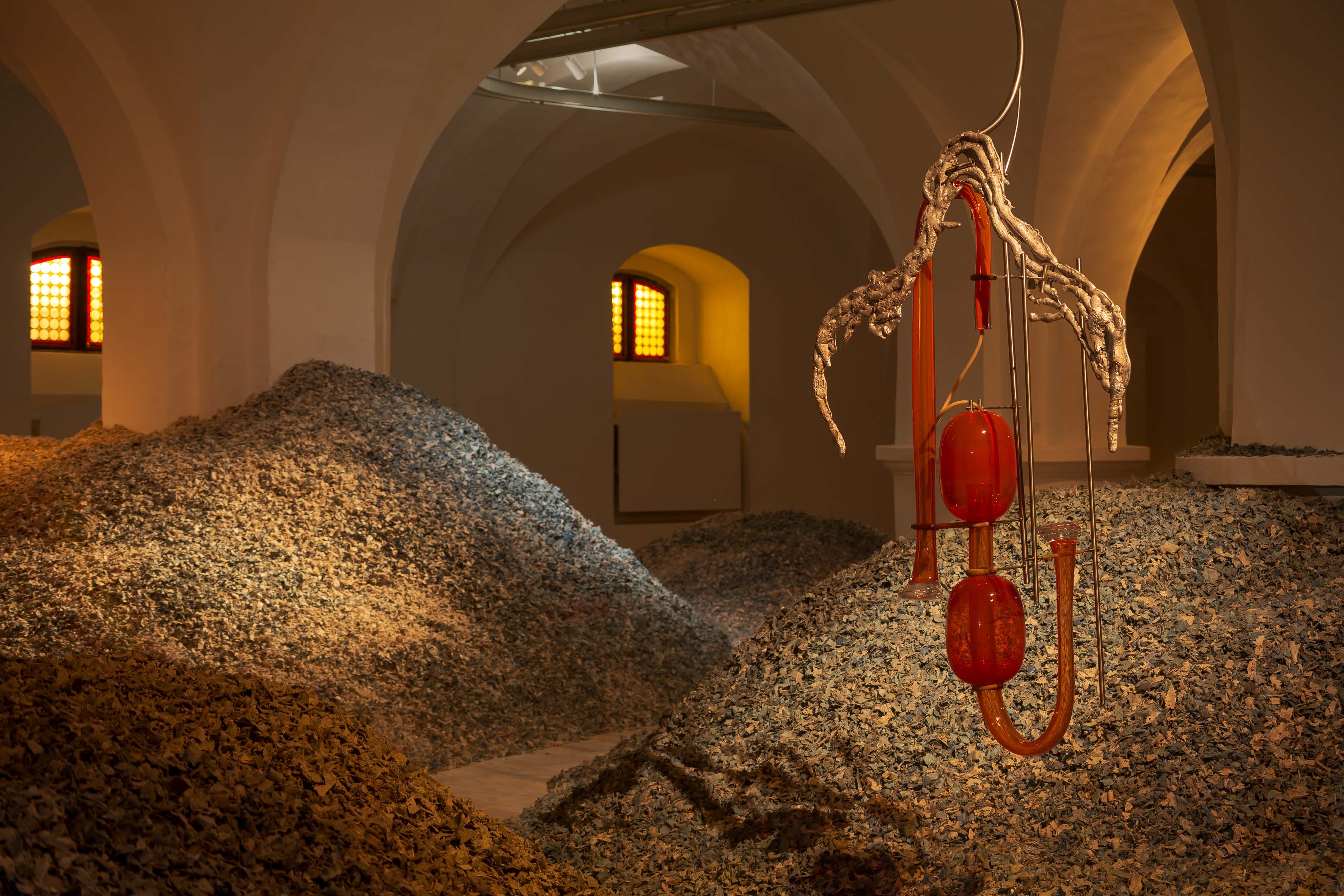

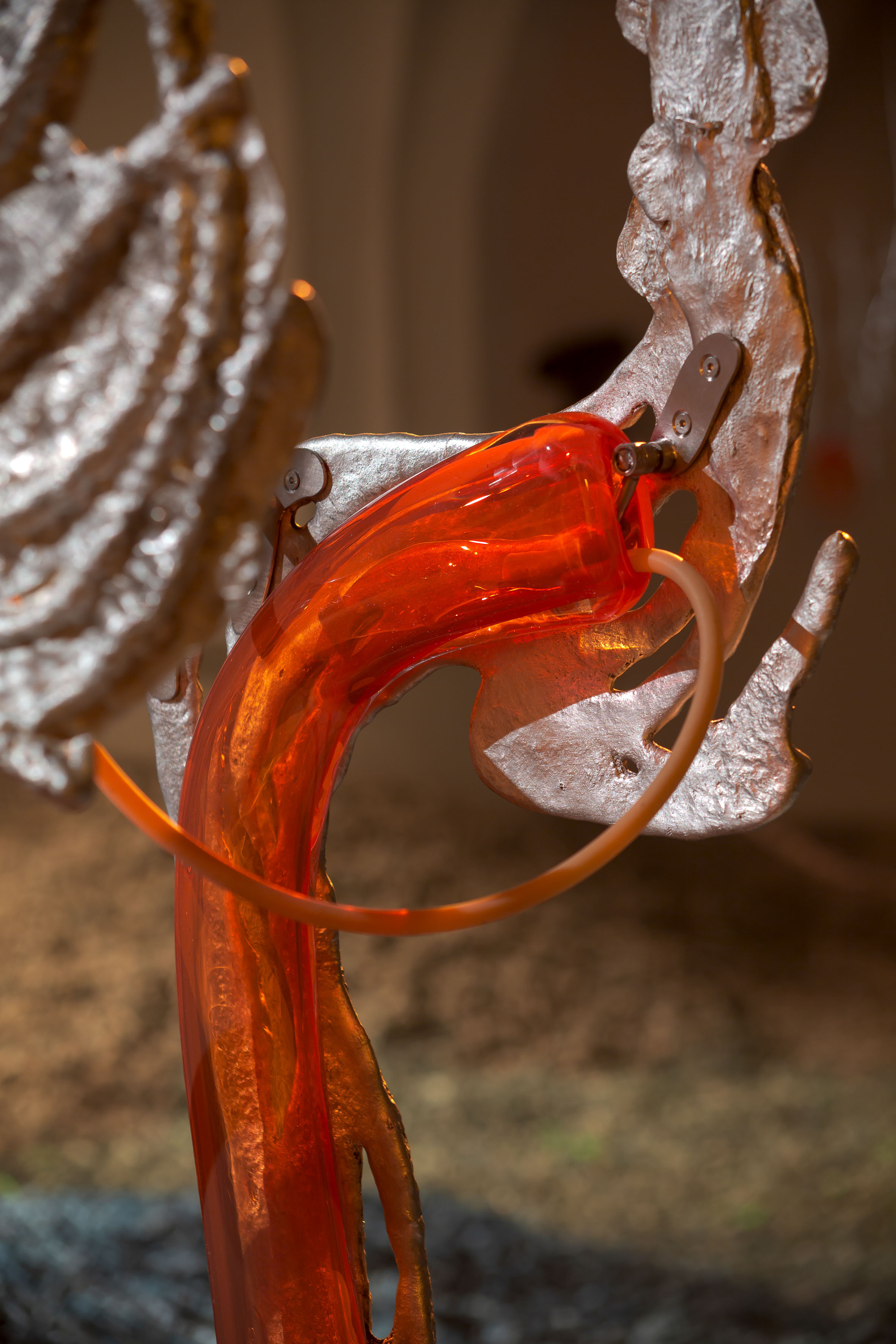



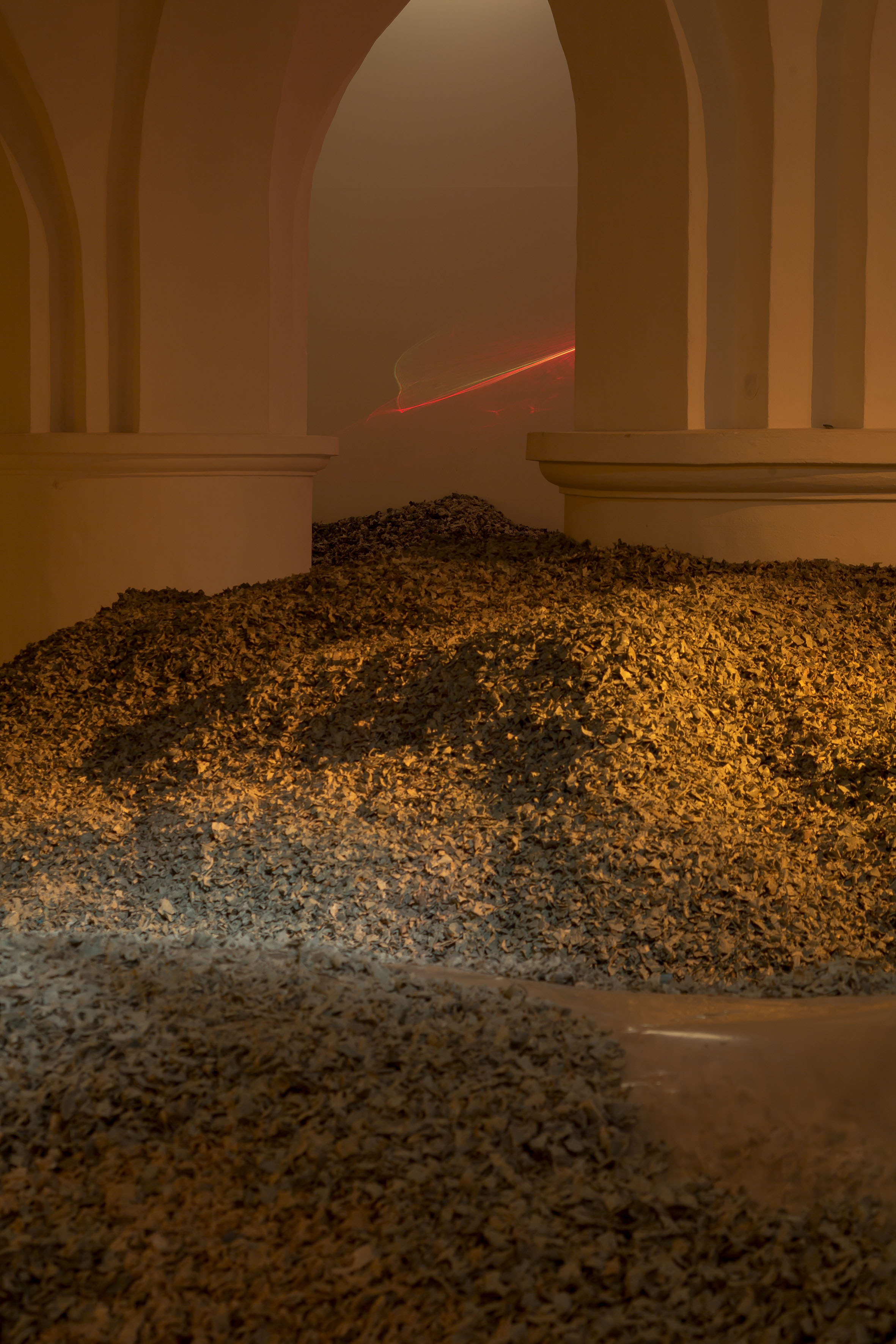
A scorched landscape emerges on the retina strained by twilight.
On the marble floor, dunes of plastic soil. Along electric pathways, fuelled by motor “whisker” wires of neurons moves a gallery of kinetic figures; they resemble prosthetic organs and silhouettes of nervous systems. Instead of ceilings, dreamlike arches of geological or prehistoric animal fossils. In this delirious post-landscape, it’s hard to distinguish between what used to be attributed to nature and what was considered a human creation. Objects resembling human organs in a state of inflammation, architecture, a post-natural landscape, light and other technologies merge into a unified hybrid technoorganism.
Thematically, the new large-scale exhibition by Pakui Hardware, Inflammation, speaks of the fevers of humanity and the world, of the “flaming” bodies of the planet and of our own. The artists drew inspiration from Marya Rupa and Raj Patel’s book Inflamed: Deep Medicine and the Anatomy of Injustice, which uses the concept of inflammation as a metaphor for the systemic harms being inflicted on both humanity and the planet. Inflammation, according to the authors, is the body’s normal response to toxic conditions, and the first thing to be “treated” are not the individual unhealthy organs, but the very systems – economic or social – that make these chronic ailments be passed on from one generation to the next. Both the book and the exhibition connect the human and the planetary scales: not only our body, but also that of the planet is aflame. Another important line of the book, which has also been present and evolving in Pakui Hardware’s work in recent years, is the act of questioning the cosmology of the Western world, characterised by a constant fragmentation or separation – of the mind from the body, of the human from nature, of what is considered “own” from what belongs to the realm of the “other”. In the exhibition, these separations melt and merge into one mixed speculative organism that connects architecture with nature, the Mesozoic with the contemporary, the human with technology, plastic with soil.
The architecture of this kinetic installation and the landscape of the plastic earth was created by Ona Lozuraitytė-Išorė and Petras Išora-Lozuraitis in collaboration with the artists. In the context of the artwork, plastic can be seen both as a highly durable, non-degradable fossil that represents the Anthropocene era and will undoubtedly outlive us for generations to come, and as an infestation that has contaminated a whole variety of ecosystems on a planetary scale. The architects and artists were inspired by the mazy and dreamlike spaces of the Museum of Applied Arts and Design – a typical example of the stratigraphy of human activity, still affected by a traumatic past. A pseudo-Renaissance palace rebuilt on the ruins of a Renaissance building inspired the architects to think about the engineering of nature, environmental terraforming and non-/extractable architecture. The metal rails incorporated into the pseudo-renaissance cylindrical arches – the latter possibly stylistically resembling regular columnar arcades created from giant fossils of prehistoric animals – act as prostheses extending the body of the building. The motif of prostheses – using silicone membranes, medical or laboratory materials – is further developed in the kinetic installation. The fused aluminium and glass sculptures were born in sweltering heat, and come to life in the exhibition space when touched by a burning laser beam. In this immersive choreography – created by the aforementioned moving or stable sculptures, terraforming and other elements – an important role is also played by the spectators, whose routes and gazes meaningfully complement this post-natural pseudo-archaeological Piranesian landscape built from the ruins of a speculative ecological system.
Preparing a solo exhibition in Lithuania after a long break, the Pakui Hardware collective will represent Lithuania at the International Art Exhibition of La Biennale di Venezia 2024 together with Marija Teresė Rožanskaitė (1933-2007). This exhibition is an introduction to the future pavilion.
About the Artists:
Pakui Hardware (Neringa Černiauskaitė and Ugnius Gelguda) is a duo founded in 2014. In the eight years of its existence, it has held solo exhibitions at BALTIC Centre for Contemporary Art, Gateshead (UK); MUMOK Museum of Modern Art, Vienna; Museum of Fine Arts Leipzig; Kunstverein Bielefeld; carlier|gebauer, Berlin; Tenderpixel, London; Contemporary Art Centre, Vilnius; kim? Contemporary Art Centre, Riga; and Polansky, Prague. The duo’s exploration of the relationship between the body, technology and the economy, as well as their distinctive artistic expression, have attracted the attention of numerous art professionals – Pakui Hardware has participated in the Istanbul Biennial, the 13th Baltic Triennial in Vilnius, the Gardena Biennial in Italy and the Kaunas Biennial, as well as exhibitions at the Kunsthalle Basel, the MAXXI Museum in Rome, the National Gallery of Art in Prague, the National Gallery of Art in Vilnius, the Ujazdowski Art Centre in Warsaw, and the BOZAR Museum in Brussels, among many other. This year, the duo was also invited to curate the whole 2023 programme at La Casa Encedida Centre for Contemporary Art in Madrid.
About the Exhibition Environment and Landscape Architects:
Išora x Lozuraitytė studio (Petras Išora-Lozuraitis and Ona Lozuraitytė-Išorė) is an architectural duo awarded the 2021 Vilnius City Municipality Award of St. Christopher for “a synergy between conceptual art and architecture”. They are the authors of the renovated Radvila Palace inner public and exhibition spaces, and the winner architects of the competitions for the bridge over the Neris (Užvingis Island Bridge) in Vilnius as well as the pedestrian bridges between Nemunas Island and Kaunas city center (both together with KILD). They have also won the State Forest Enterprise headquarters competition (together with After Party), and created the strategy for the reactivation of the public spaces and buildings for the culture complex/community SODAS 2123. Išora and Lozuraitytė are the authors of the architecture of numerous important exhibitions, including the 14th Baltic Triennial, Jonas Mekas and the New York Avant-Garde and the permanent exhibition at the National Gallery of Art in Vilnius, the Lithuanian Space Agency, and Julijonas Urbonas’ installation at the Venice Biennale of Architecture; the curatorial team behind the exhibition Forming the Landscape at the National Gallery of Art; and co-curators of the Baltic Pavilion at the Venice Biennale of Architecture. The duo has also collaborated with the artists Pakui Hardware for many years, contributing to the implementation of large-scale installations in multiple European institutions.
Exhibition Environment and Landscape Architects: Išora x Lozuraitytė studio
Curator: Valentinas Klimašauskas
Project Coordinator: Evaldas Stankevičius
Light Artist: Eugenijus Sabaliauskas
Design: Vytautas Volbekas
Translation: Alexandra Bondarev
Project is financed by Lithuanian Council for Culture
[Text: Valentinas Klimašauskas]
©YYYYMMDD All content and design by Daniela Grabosch + Ricardo Almeida Roque unless otherwise stated. Images, Videos and Texts can only be used under permission of the author(s).